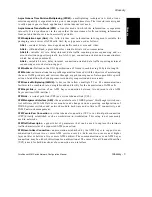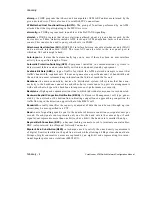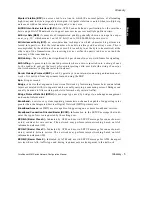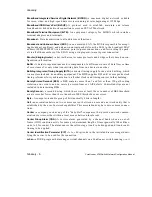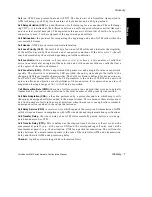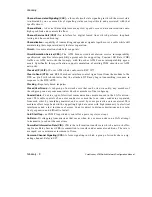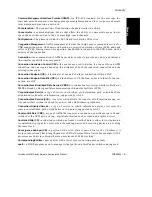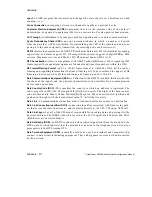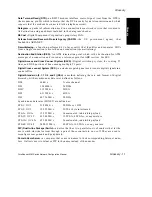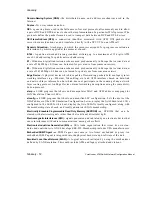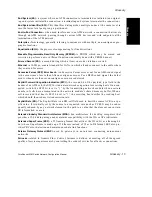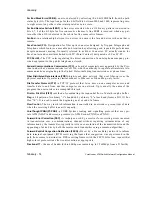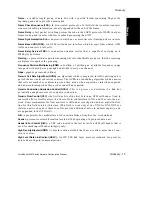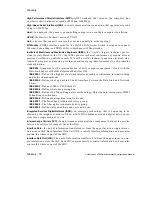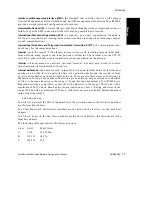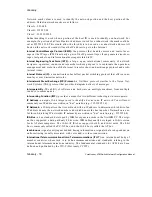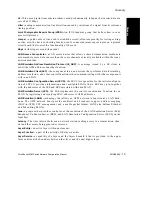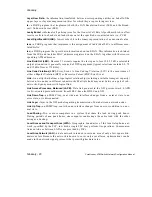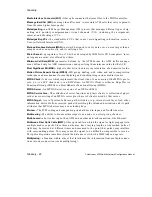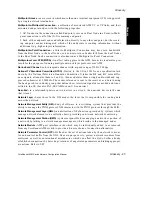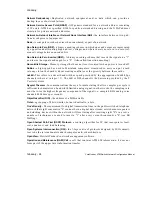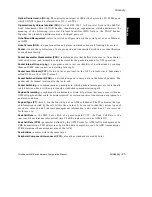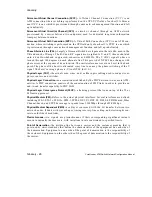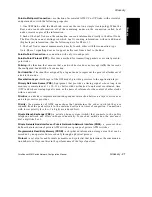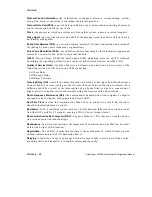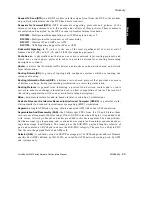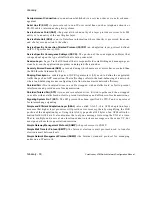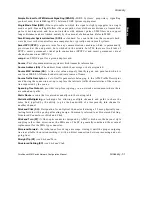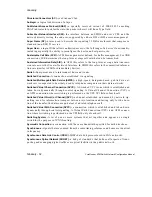
ForeRunner
ATM Switch Network Configuration Manual
Glossary - 17
Gl
o
s
s
a
ry
Glossary
Interim Local Management Interface (ILMI) -
the standard that specifies the use of the Simple
Network Management Protocol (SNMP) and an ATM management information base (MIB) to
provide network status and configuration information.
Intermediate System (IS) -
a system that provides forwarding functions or relaying functions or
both for a specific ATM connection. OAM cells may be generated and received.
International Standards Organization (ISO) -
a voluntary, non treaty organization founded in
1946 that is responsible for creating international standards in many areas, including comput-
ers and communications.
International Telephone and Telegraph Consultative Committee (CCITT) -
the international stan-
dards body for telecommunications.
Internet -
(note the capital “I”) the largest internet in the world including large national back-
bone nets and many regional and local networks worldwide. The Internet uses the TCP/IP
suite. Networks with only e-mail connectivity are not considered on the Internet.
internet -
while an internet is a network, the term “internet” is usually used to refer to a collec-
tion of networks interconnected with routers.
Internet Addresses -
the numbers used to identify hosts on an internet network. Internet host
numbers are divided into two parts; the first is the network number and the second, or local,
part is a host number on that particular network. There are also three classes of networks in
the Internet, based on the number of hosts on a given network. Large networks are classified
as Class A, having addresses in the range 1-126 and having a maximum of 16,387,064 hosts.
Medium networks are classified as Class B, with addresses in the range 128-191 and with a
maximum of 64,516 hosts. Small networks are classified as Class C, having addresses in the
range 192-254 with a maximum of 254 hosts. Addresses are given as dotted decimal numbers
in the following format:
nnn.nnn.nnn.nnn
In a Class A network, the first of the numbers is the network number, the last three numbers
are the local host address.
In a Class B network, the first two numbers are the network, the last two are the local host
address.
In a Class C network, the first three numbers are the network address, the last number is the
local host address.
The following table summarizes the classes and sizes:
Class
First #
Max# Hosts
A
1-126
16,387,064
B
129-191
64,516
C
192-223
254
Summary of Contents for forerunner series
Page 6: ......
Page 16: ...TOC 10 ForeRunner ATM Switch Network Configuration Manual Table of Contents ...
Page 20: ...LOF 4 ForeRunner ATM Switch Network Configuration Manual List of Figures ...
Page 22: ...LOT 2 ForeRunner ATM Switch Network Configuration Manual List of Tables ...
Page 30: ...viii ForeRunner ATM Switch Network Configuration Manual Preface ...
Page 144: ...3 58 ForeRunner ATM Switch Network Configuration Manual Configuring an Emulated LAN ...
Page 180: ...6 12 ForeRunner ATM Switch Network Configuration Manual ATM Forum PNNI ...
Page 220: ...9 6 ForeRunner ATM Switch Network Configuration Manual Configuring Timing ...
Page 300: ...D 24 ForeRunner ATM Switch Network Configuration Manual Configuring FramePlus Modules ...
Page 308: ...Acronyms 8 ForeRunner ATM Switch Network Configuration Manual Acronyms ...
Page 346: ...Glossary 38 ForeRunner ATM Switch Network Configuration Manual Glossary ...
Page 352: ...Index 6 ForeRunner ATM Switch Network Configuration Manual Index ...

